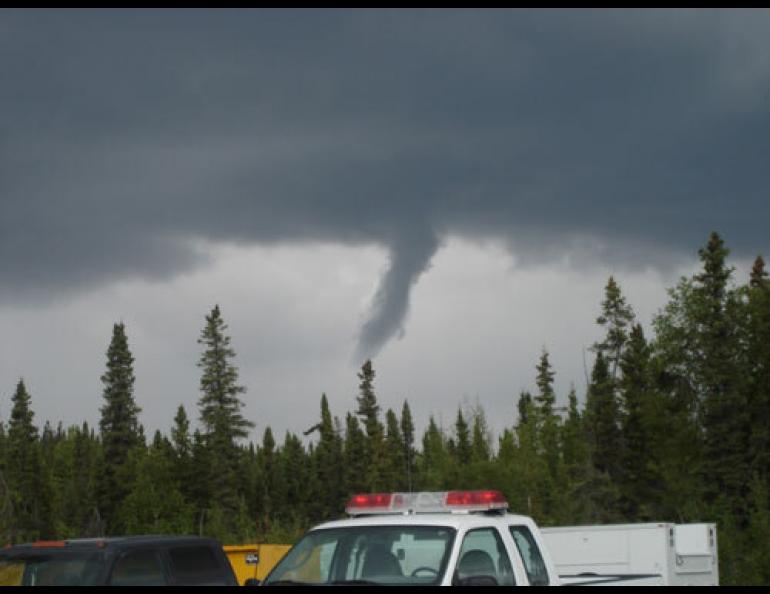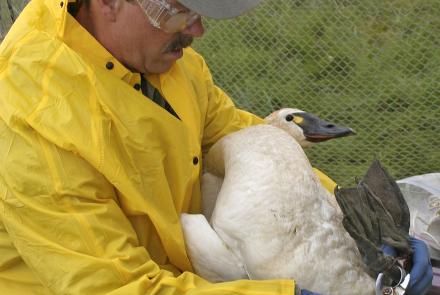


Waterspouts, dust devils, wlliwaws and tornadoes
Dorothy Ivanoff of Unalakleet isn’t crazy about flying, especially when the flight is bumpy. That’s why she surprised herself in early August, when her commercial pilot circled near the village of Koyuk so they could better see a funnel cloud developing on Norton Sound.
“Oh my god, this thing was spectacular,” she said. “I wasn’t scared or nervous at all.”
Ivanoff used the video mode of her point-and-shoot Canon camera to record more than one minute of a waterspout that danced across the surface of Norton Bay near Koyuk in early August. She posted it on YouTube here: http://www.youtube.com/watch?v=crdtbZwpHbY.
Ivanoff recorded something few Alaskans see. A few years ago, a National Weather Service meteorologist listed 43 tornado-like events being reported in Alaska, among them 18 waterspouts, rotating columns of air that form over large bodies of water. Waterspouts like the one Ivanoff saw have probably been seen by dozens of Alaskans who haven’t reported details of their sightings, wrote David Vonderheide, formerly with the National Weather Service in Anchorage.
Vonderheide searched for Alaska “tornadic events,” finding anecdotes of waterspouts, large dust devils (including one big enough to force a helicopter to crash on Eagle Summit in 1968), williwaws (whirlwinds formed in the lee of jutting terrain features), and tornadoes.
He found just four reports of Alaska tornadoes. A pilot saw a funnel cloud touch down on the ground just west of Cook Inlet in August 1999, on a day that almost an inch of rain fell on Anchorage. In Anchorage on May 25, 1995, several people saw a “thin, rope funnel” extending to the ground in the city, lifting a shed and collapsing a carport onto five cars. A third tornado occurred near the village of Chevak in July 1992, where a pilot saw a funnel cloud touch down near the bank of the Kushunuk River.
The farthest north reported tornado, “a weak tornado that touched down only briefly,” happened 29 miles north of the Arctic Circle, near the village of Kiana, on Aug. 26, 1976.
“A slender funnel cloud emerged from the base of the parent thunderstorm,” wrote National Weather Service meteorologist Ted Fathauer. “Within a minute or two, the funnel reached the ground along the ridgeline of the Hockley Hills.”
Alaskans are unlikely to see a real tornado, said Eric Stevens of the National Weather Service in Fairbanks.
“Very broadly speaking, tornadoes come in two flavors, descending and non-descending,” Stevens said. “Descending tornadoes first develop aloft in a rotating super-cell thunderstorm and then descend to the ground. The big bad tornadoes—the kind that wipe out entire towns—are all of the descending variety, though descending tornadoes can be wimpy too. Non-descending tornadoes don’t start aloft in a rotating thunderstorm; they form down low in the rising column of air that is feeding into the thunderstorm. Non-descending tornadoes are always wimpy, if you can call any tornado wimpy. Dust devils and waterspouts are variations on the non-descending theme . . . Any tornadoes in Alaska would very likely be of the non-descending type.”







